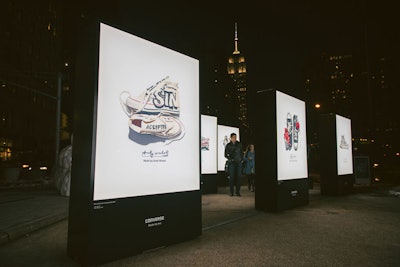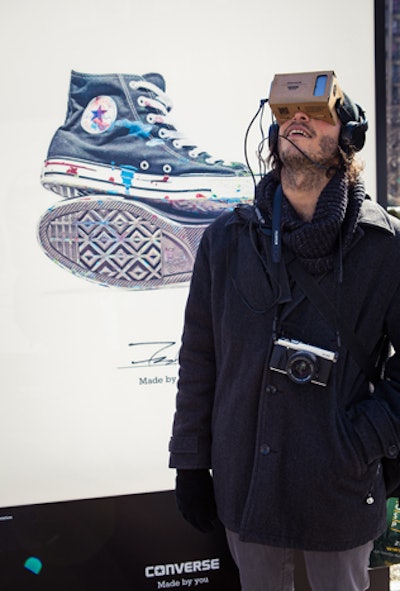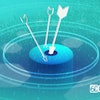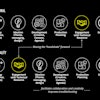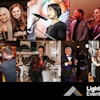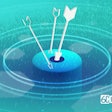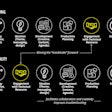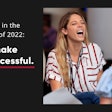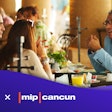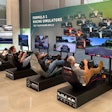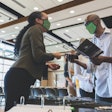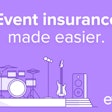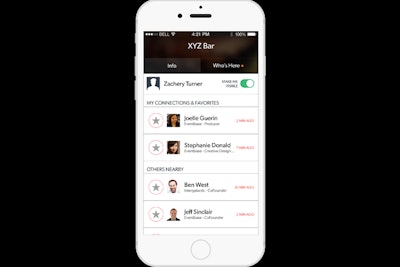
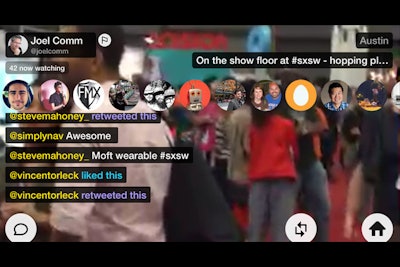
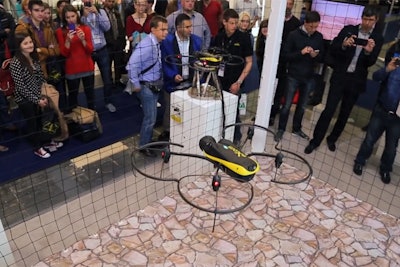

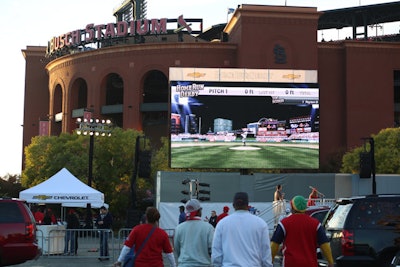
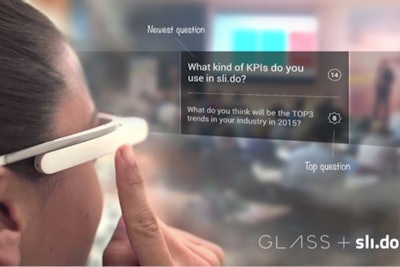
Sli.do, a Web-based system for audience interaction, introduced its Google Glass app at the Fresh14 Conference in Copenhagen in January. Audience members go to a dedicated URL to submit questions during a presentation. Everyone participating can see the questions and vote them up or down. The top questions appear on screens around the room and also are visible to the person wearing Glass, for example the moderator or presenter, allowing the person to respond without having to look at a computer or turn to look at the screens. Future updates will include the ability to see poll results in Glass.

Refresh provides brief background information on people just a few minutes before scheduled meetings to facilitate better engagement. Users link their calendars to the app and then the system searches public posts on networks such as Facebook, LinkedIn, Twitter, and Pinterest from anyone they will be meeting. The insights arrive in Glass about 15 minutes before the meeting and may include information such as the person’s hometown, education, sports interests, and recent blog posts.
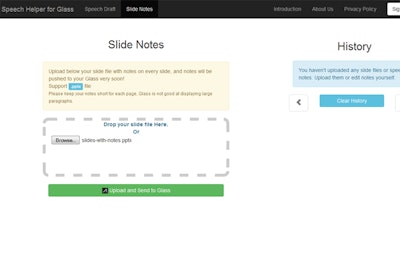
Speech Helper turns Glass into a teleprompter. Users type their speaking notes into the app’s website. If the speaker is using PowerPoint, the app can automatically extract the slide notes. The notes appear in Glass as cards, and the presenter can share them through social media. The makers of Speech Helper, a group of recent graduates of the University of Southern California, are also developing Slide Remote, an app that enables Glass to control a slide show on a computer.
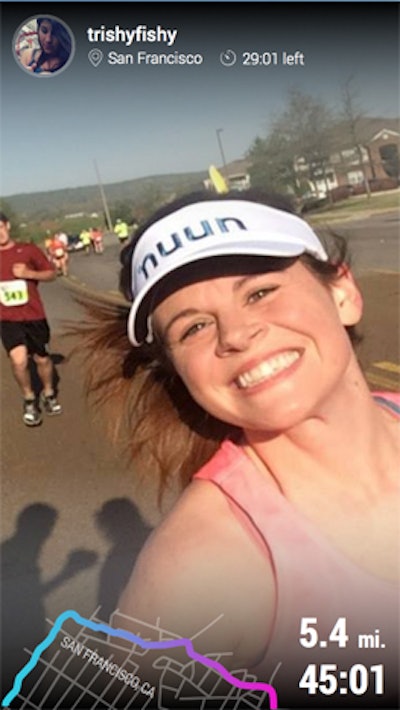
Light is an app that adds context to photos taken at an event and makes them easy to share. The app syncs with the user’s smartphone, so as someone takes photos with Google Glass, the photos appear in the handheld device. From there the app pulls in data such as time of day, location, weather, and upcoming information about the event, which can be added to the photo before it's shared. For example, at Coachella the app pulled in the performance schedule and provided overlays indicating acts coming up next. The same could be done at a conference with an overlay of upcoming sessions.
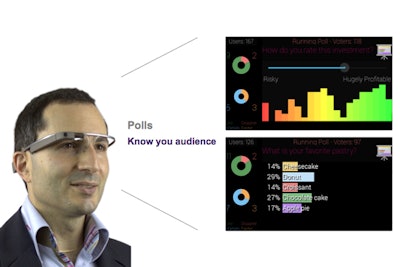
ConnexMe is a Glass app from Evenium to facilitate interactivity during a meeting or presentation. Audience members go to a dedicated URL on their smartphones or tablets. Using a voice command with Glass, the speaker can launch a poll that appears on the website and can also be projected on screens around the room. As participants respond to the poll on their devices, the speaker sees the results in Glass. For fast feedback, the system has four buttons audience members can click to indicate agree, disagree, “I want to know more,” and “I know this already so please move on.” Those results also appear in Glass. Audience members can also submit questions online and vote on questions submitted by others. The speaker sees the top-voted questions in Glass and can also choose to display them on the screens.
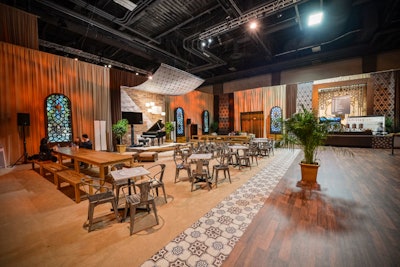

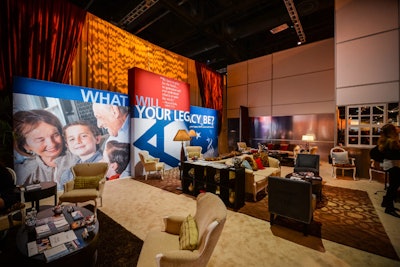
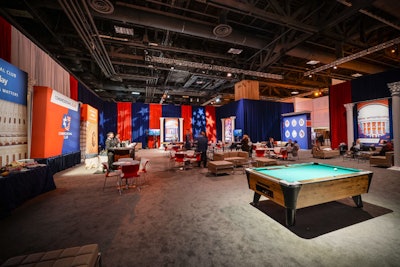
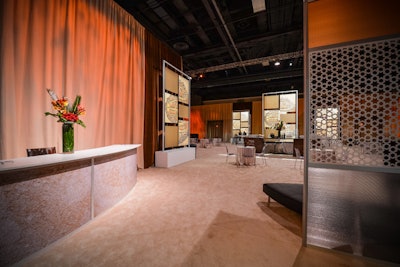
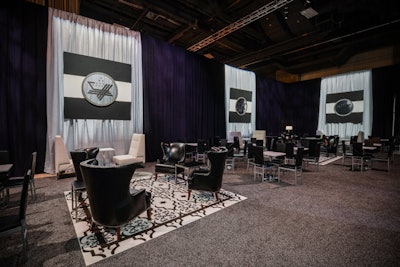

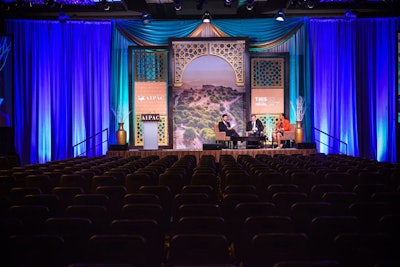
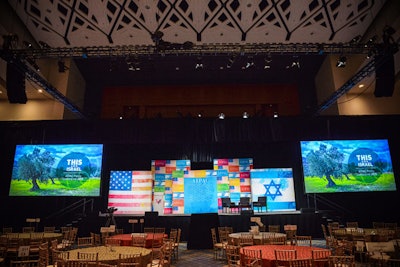
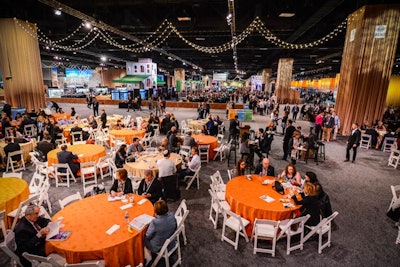
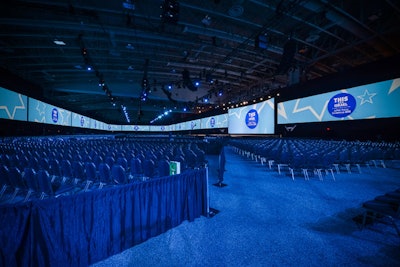
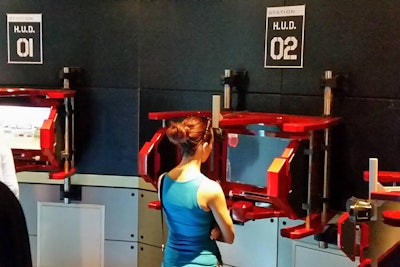
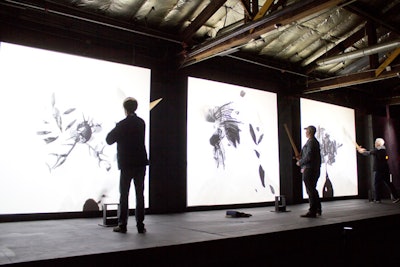
HBO’s SXSWesteros house promoted the cable network's hit series Game of Thrones and featured an interactive sword-playing game where attendees used Bluetooth-enabled swords to hit targets on a screen. Before the activity, participants posed for photos that were then incorporated into the game.
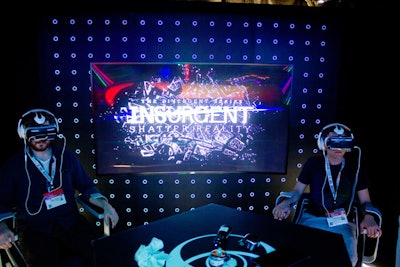
Samsung housed the “Insurgent Shatter Reality” virtual reality experience. Using Samsung VR technology, guests could visit the realm from the Divergent film series.

A large interactive table at the center FX’s Fearless Factory showcased the television channel's mobile app. Smaller tablets were built within side tables, too.
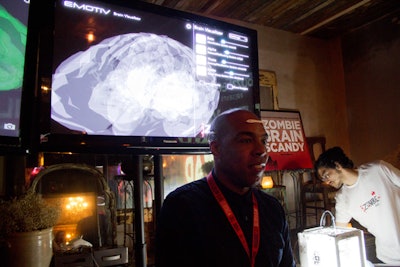
At the premiere party for the CW’s iZombie hosted by BuzzFeed, Emotiv headsets were provided to guests who were able to see their brain activities in response to eating different types of 3-D-printed candy made on the premises. Guests were allowed to email themselves a copy of their scans.

At the fifth annual Fast Company Grill, sponsor Toyota unveiled an Oculus Rift distracted driving simulator. Participants donned the device and sat in the driver’s seat of a Toyota and replicated a drive through an active and noisy street.
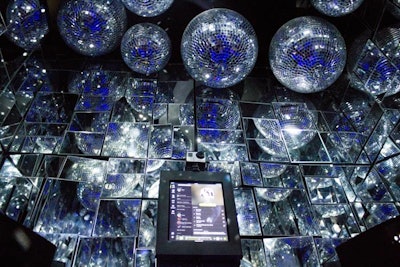
Users entered the Bose Southbooth, covered in mirrors and disco balls, and chose a single song to add to the official Spotify SXSW playlist.
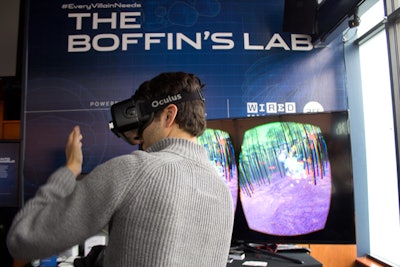
Boffin’s Lab featured a demonstration of Leap Motion headset technology, where guests were taken on a virtual reality through a forest.
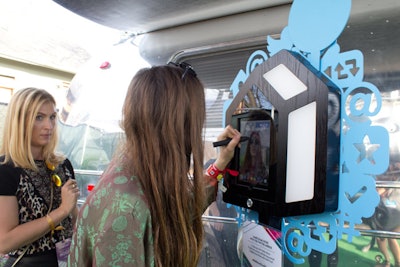
The department store featured a Twitter mirror in the artist area at its Make Some Noise house. Users were able to take photos of themselves, add additional content like text and drawings, and then tweet out the image through the brand’s Twitter account.
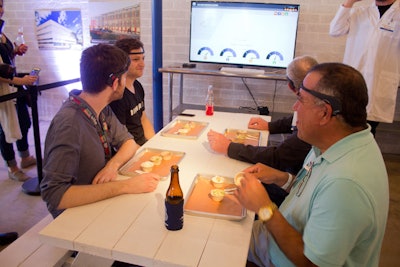
At General Electric's BBQ Research Center, participants put on color-coded brainwave scanners to see how their brains reacted while eating different barbecue cuts and sides.

Yahoo showcased the brand’s digital magazine content through projections on a cube set up near the entrance of the venue during the daytime. For evening events like the Community and Sin City Saints parties, images from the shows were shown.
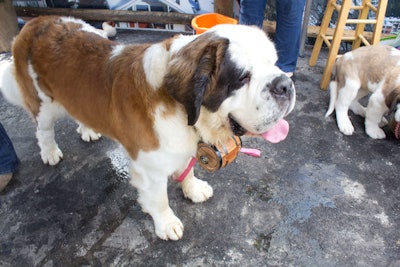
Mophie helped rescue attendees with dying phone batteries by sending out St. Bernards with a Mophie power reserve unit within a barrel attached to the dog’s collar. Those seeking help had to take a screenshot of their dying battery screen as well as their location, and tweet at the brand. The St. Bernards were housed at the MophieRescue Lodge, where the products were showcased. The organization also worked with the St. Bernard Rescue Foundation to raise awareness of adoptable St. Bernards across the country.
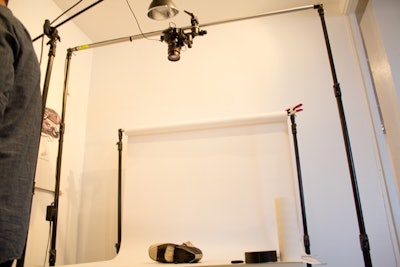
Extending its Made by You initiative, Converse photographed professional portaits of attendees’ sneakers in the style of the ad campaign. The images were then displayed on screens in the space. For those who weren’t wearing the brand, lucky guests were given free shoes at random.
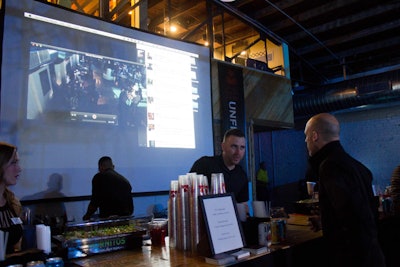
The premiere party for Unfriended, which was screened at SXSW, featured live streams of the current event throughout the space, alongside a Twitter feed of the party’s hashtag, mimicking the film’s plot centered on live video chats.
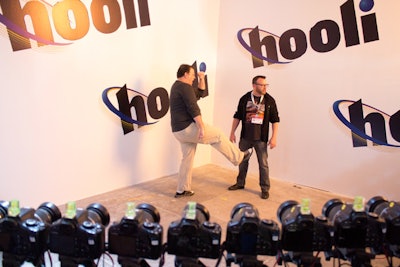
HBO’s Silicon Valley returned to the Mashable House with several activations, including Scheimpflüg’s Time Slice 360-degree photo booth, the images from which guests could email to themselves.
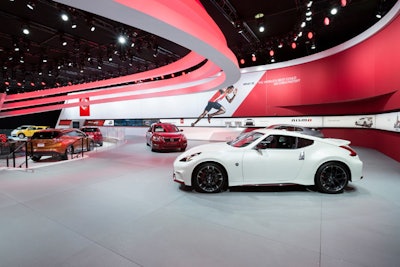
At the North American International Auto Show, held January 12 to 25 in Detroit, experiential marketing agency George P. Johnson used R.F.I.D. and iBeacons to create an interactive experience for Nissan that guests controlled on their smartphones. Using geolocation, the system provided information about specific vehicles as guests moved close to them. They could also play games and download marketing materials. “Literally as you are going around, the experience you are having is 100 percent unique to you,” said John Capano, senior vice president for strategy and planning for George P. Johnson. “And we could make adjustments in real time. If we had a car that was not getting enough attention, we could change the call to action, change the signage.” Capano said the activation provided extensive data that showed high dwell times and engagement.
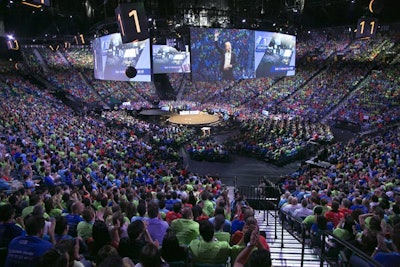
More than 18,000 people attended the Cisco Global Sales Experience meeting last August in Las Vegas. Experiential marketing agency George P. Johnson used beacons to gather real-time data on attendee movement in both the MGM Grand Garden Arena and in the Mandalay Bay Convention Center, the location of breakout sessions. By monitoring capacities via cameras in each breakout room, organizers could optimize seating and also adjust the schedule to accommodate demand on site.
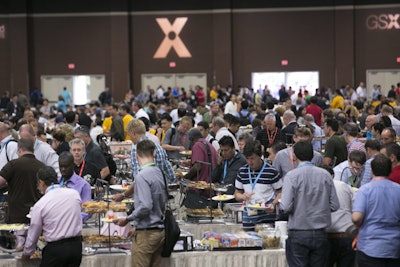
By monitoring data feeds from the food lines, organizers could immediately open additional lines as necessary to address bottlenecks.

For the Cisco Global Sales Experience meeting last August, buses used to move people between the MGM Grand Garden Arena and the Mandalay Bay Convention Center had sensors that reported the vehicles’ speeds and locations, so organizers could instantly dispatch more buses as needed. Attendees could also see the data feeds from the buses on a touch-screen dashboard.
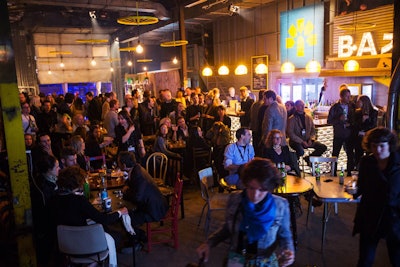
At C2 Montréal in May, organizers adjusted the number of staffers and amount of food in areas where they saw high concentrations of attendees, based on data transmitted from R.F.I.D. badges provided by Connect & Go.
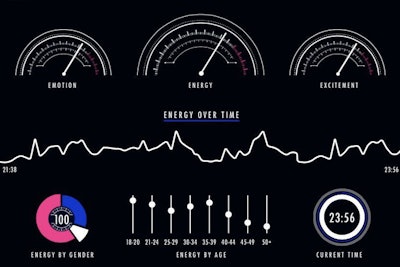
Lightwave’s biometric wristbands have been used at events hosted by Pepsi and Google, where DJs used the real-time data to adjust music selection to affect the crowd’s energy. The wristbands have four sensors: an accelerometer to measure the wearer’s movement, both within a space and individually (for example to track whether people are dancing); a microphone to detect decibel levels; a gauge to measure both body and ambient room temperature; and a sensor to detect skin conductance response, which can sense sweat and can indicate physiological and psychological arousal.

